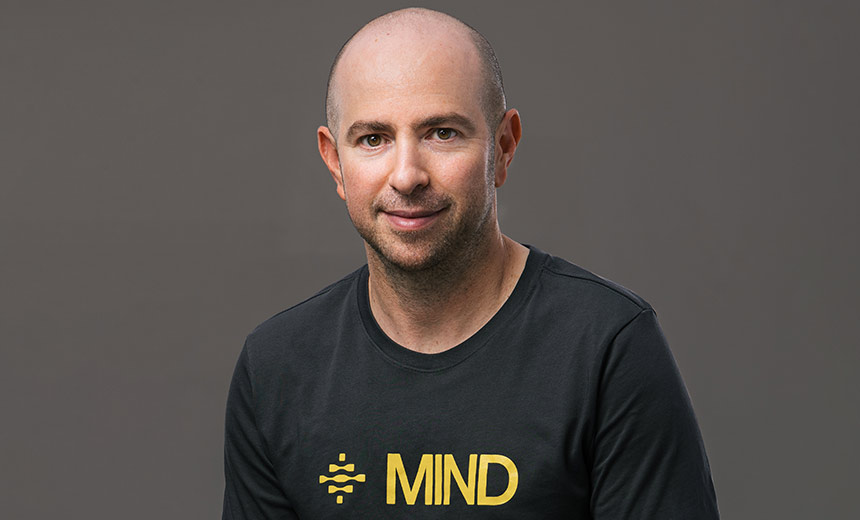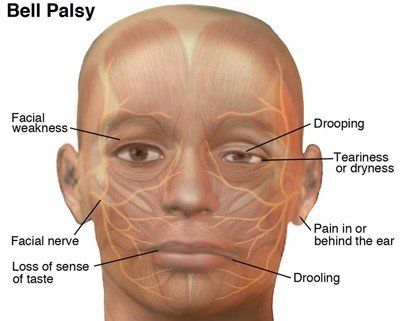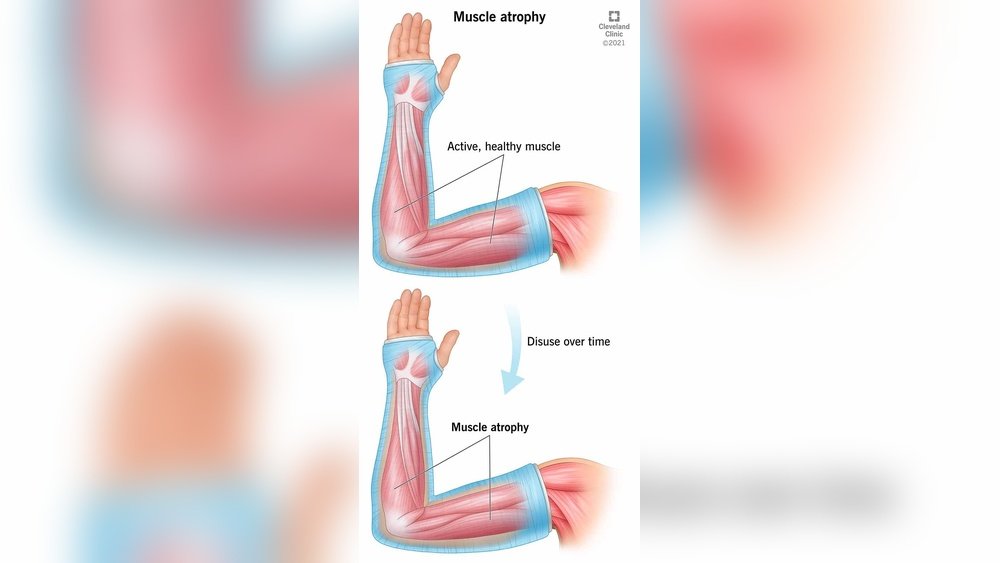Your face tells your story every day, but what happens when the natural fullness fades away? Facial muscle atrophy, or the loss of muscle and volume in your face, can leave you looking tired or older than you feel.
The good news is, you don’t have to accept these changes as inevitable. By taking simple, effective steps, you can protect your facial muscles and maintain a youthful, vibrant appearance. You’ll discover easy-to-follow habits and expert tips that help prevent facial muscle atrophy—so you can keep your face looking fresh and full of life for years to come.
Ready to learn how to safeguard your natural beauty? Let’s dive in.

Credit: gero.usc.edu
Daily Skin Protection
Daily skin protection plays a vital role in preventing facial muscle atrophy. Protecting your skin from harmful elements helps maintain collagen and muscle tone. Consistent care shields your face from damage and supports a youthful appearance. Simple daily habits can make a big difference over time.
Use Broad-spectrum Sunscreen
Broad-spectrum sunscreen blocks both UVA and UVB rays. These rays break down collagen and weaken facial muscles. Apply sunscreen every day, even on cloudy days. Choose a sunscreen with at least SPF 30 for effective protection. Reapply every two hours when outdoors to maintain coverage. Protecting your skin daily reduces the risk of volume loss and wrinkles.
Wear Protective Accessories Outdoors
Hats, sunglasses, and scarves shield your face from direct sunlight. Wide-brimmed hats cover your forehead, cheeks, and neck. Sunglasses protect the delicate skin around your eyes from UV damage. Lightweight scarves can guard your skin during long outdoor activities. Using these accessories reduces sun exposure and helps preserve facial muscle health.
Hydration And Moisturizing
Hydration and moisturizing play key roles in preventing facial muscle atrophy. Keeping your skin and muscles well-hydrated helps maintain elasticity and firmness. Dry, dehydrated skin can speed up muscle loss and make signs of aging more visible.
Proper hydration supports skin cells and facial tissues. Moisturizing locks in moisture and protects the skin barrier. Together, these habits improve skin texture and muscle tone, helping your face look fuller and healthier.
Drink Plenty Of Water
Water is essential for healthy skin and muscles. It helps flush out toxins and supports cell function. Aim to drink at least eight glasses of water daily. Staying hydrated keeps your skin soft and plump, which reduces the risk of muscle shrinkage.
Dehydration can cause your skin to look dull and tired. It also weakens muscle fibers, making your face lose volume. Drinking water regularly helps maintain facial muscle strength and prevents early signs of atrophy.
Apply Moisturizers Regularly
Moisturizers nourish the skin and prevent dryness. Apply them twice a day, especially after washing your face. Choose products with hydrating ingredients like hyaluronic acid or glycerin.
Regular moisturizing supports the skin’s natural barrier and improves elasticity. This helps keep facial muscles firm and reduces sagging. Moisturized skin also heals faster and resists damage from environmental stress.
Balanced Nutrition
Balanced nutrition plays a key role in preventing facial muscle atrophy. Eating the right foods supports muscle health and skin vitality. Nutrients help maintain muscle mass and improve skin texture. A diet rich in antioxidants and protein strengthens facial muscles over time. This section explains how to include these nutrients in daily meals.
Include Antioxidant-rich Foods
Antioxidants protect cells from damage caused by free radicals. Free radicals speed up muscle and skin aging. Foods high in antioxidants help slow this process. Berries, spinach, and nuts are excellent sources. Vitamins C and E also act as antioxidants. They support collagen production, which keeps skin firm. Eating a variety of colorful fruits and vegetables ensures a good intake. Antioxidants help preserve facial muscles and skin elasticity.
Maintain Healthy Protein Intake
Protein is essential for muscle repair and growth. Facial muscles need protein to stay strong and healthy. Lean meats, eggs, fish, and legumes provide quality protein. Consuming enough protein daily aids in muscle maintenance. It also helps the skin stay plump and resilient. Combining protein with regular exercise enhances facial muscle tone. Balanced protein intake supports overall facial structure and appearance.

Credit: www.bankinfosecurity.com
Healthy Lifestyle Choices
Healthy lifestyle choices play a key role in preventing facial muscle atrophy. A balanced routine supports muscle tone and skin elasticity. Simple daily habits can make a big difference in maintaining a youthful face. Focus on habits that protect muscle and skin health over time.
Avoid Smoking And Excess Alcohol
Smoking reduces blood flow and damages collagen in the skin. This speeds up muscle and skin aging. Excess alcohol dehydrates the skin and causes inflammation. Both habits weaken facial muscles and lead to volume loss. Quitting smoking and limiting alcohol helps keep facial muscles firm.
Manage Stress Levels
High stress raises cortisol, a hormone that harms muscle and skin cells. Chronic stress speeds up aging and muscle loss in the face. Find ways to relax daily, such as deep breathing or light exercise. Managing stress protects facial muscles and supports overall skin health.
Prevent Rapid Weight Changes
Quick weight loss or gain causes facial fat and muscle to shrink or stretch. This leads to sagging skin and muscle atrophy. Maintain a steady, healthy weight through balanced meals and regular activity. Stable weight helps keep facial muscles and skin firm and smooth.
Professional Skin Treatments
Professional skin treatments play a key role in preventing facial muscle atrophy. These treatments focus on stimulating collagen and improving skin texture. They help maintain the face’s youthful fullness and firmness. Many options are available, from non-invasive procedures to expert consultations. Choosing the right treatment can slow down volume loss and skin sagging. These treatments support the skin’s natural repair and regeneration processes.
Explore Collagen-boosting Procedures
Collagen-boosting procedures enhance skin strength and elasticity. Microneedling creates tiny skin injuries to trigger collagen growth. Chemical peels remove dead skin, promoting new cell formation. Laser treatments heat deeper skin layers to stimulate collagen. These methods improve skin texture and reduce wrinkles. Regular sessions help maintain volume and firmness. They are safe and show gradual, natural results. These treatments suit various skin types and ages.
Consult Dermatology Experts
Dermatologists assess skin condition and recommend tailored treatments. They identify signs of muscle atrophy and volume loss early. Experts guide patients on the best procedures and care routines. They may suggest dermal fillers or Sculptra to restore facial volume. Professional advice ensures safe and effective treatment choices. Regular check-ups help monitor progress and adjust plans. Trusting experts reduces risks and improves treatment outcomes.

Credit: www.myactionpt.com
Frequently Asked Questions
How To Stop Facial Atrophy?
Protect skin with daily sunscreen, stay hydrated, and eat nutrient-rich foods. Avoid smoking, excessive alcohol, and rapid weight loss. Use quality skincare and consult professionals for collagen-boosting treatments like fillers or microneedling to prevent facial atrophy.
How To Prevent Muscle Loss In The Face?
Protect facial muscles by using daily sunscreen, staying hydrated, eating nutrient-rich foods, avoiding smoking, and managing stress. Maintain a consistent skincare routine and consider professional collagen-boosting treatments. Prevent rapid weight loss and excessive exercise to preserve facial volume and muscle tone.
Can Muscle Atrophy Be Prevented?
Muscle atrophy can be prevented by regular exercise, proper nutrition, and avoiding prolonged inactivity. Protect muscles with strength training and stay hydrated. Consult healthcare providers for personalized prevention strategies.
Can Facial Muscle Atrophy Be Reversed?
Facial muscle atrophy can improve with targeted exercises, healthy lifestyle, and professional treatments. Early intervention enhances results.
What Causes Facial Muscle Atrophy And Volume Loss?
Facial muscle atrophy results from aging, poor diet, sun damage, smoking, and rapid weight changes.
How Can I Prevent Facial Muscle Atrophy Naturally?
Use sunscreen daily, stay hydrated, eat nutrient-rich foods, avoid smoking, and manage stress well.
Conclusion
Preventing facial muscle atrophy requires daily care and healthy habits. Protect your skin from sun damage with sunscreen and hats. Drink enough water and eat foods rich in vitamins and antioxidants. Avoid smoking, heavy drinking, and rapid weight changes to keep facial muscles strong.
Manage stress to support overall skin health. Use quality skincare products and consider professional advice for added help. Small, consistent steps make a big difference in maintaining your facial volume and youthful look. Start today to keep your face healthy and vibrant.
 Skip to content
Skip to content 